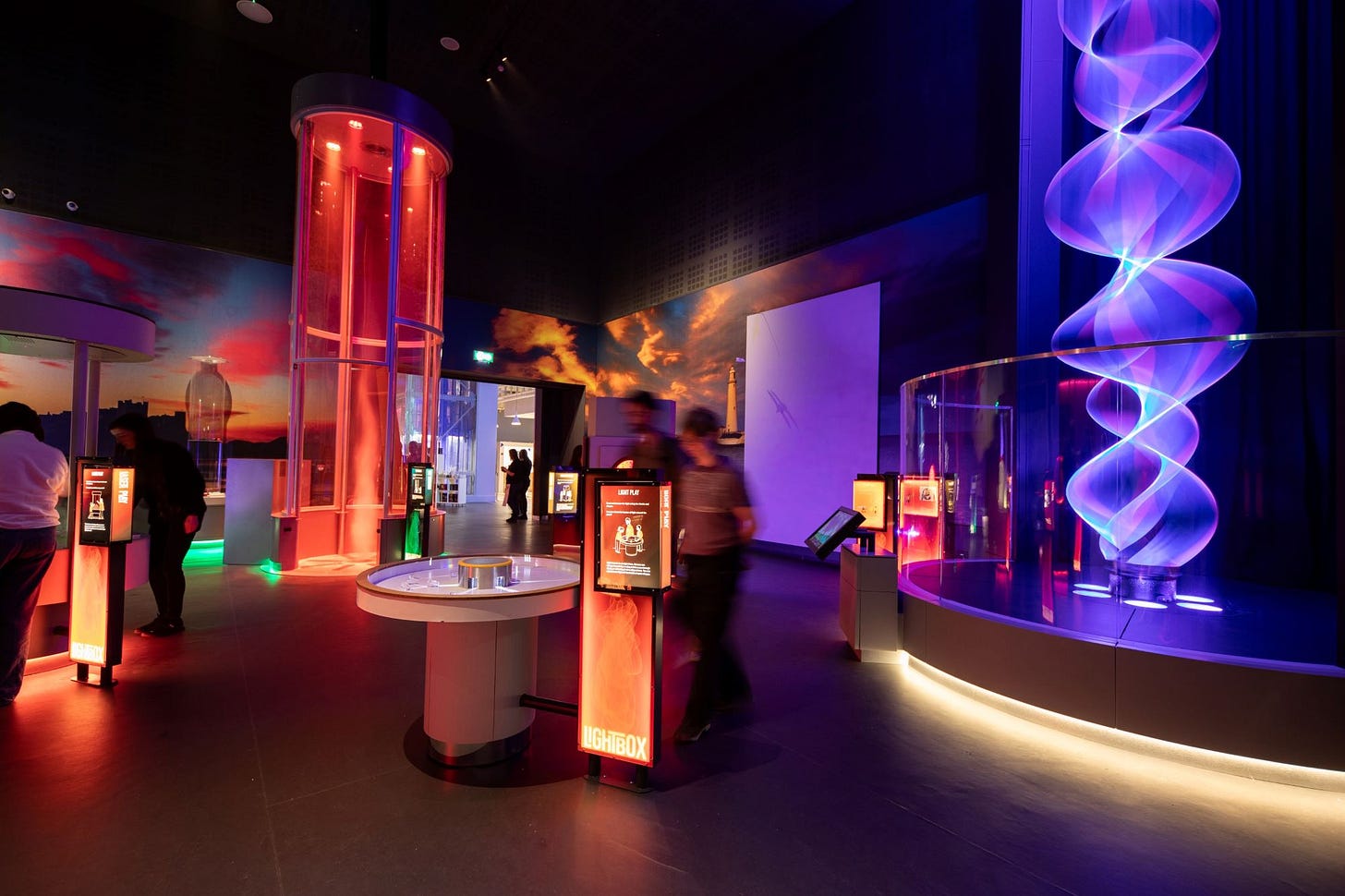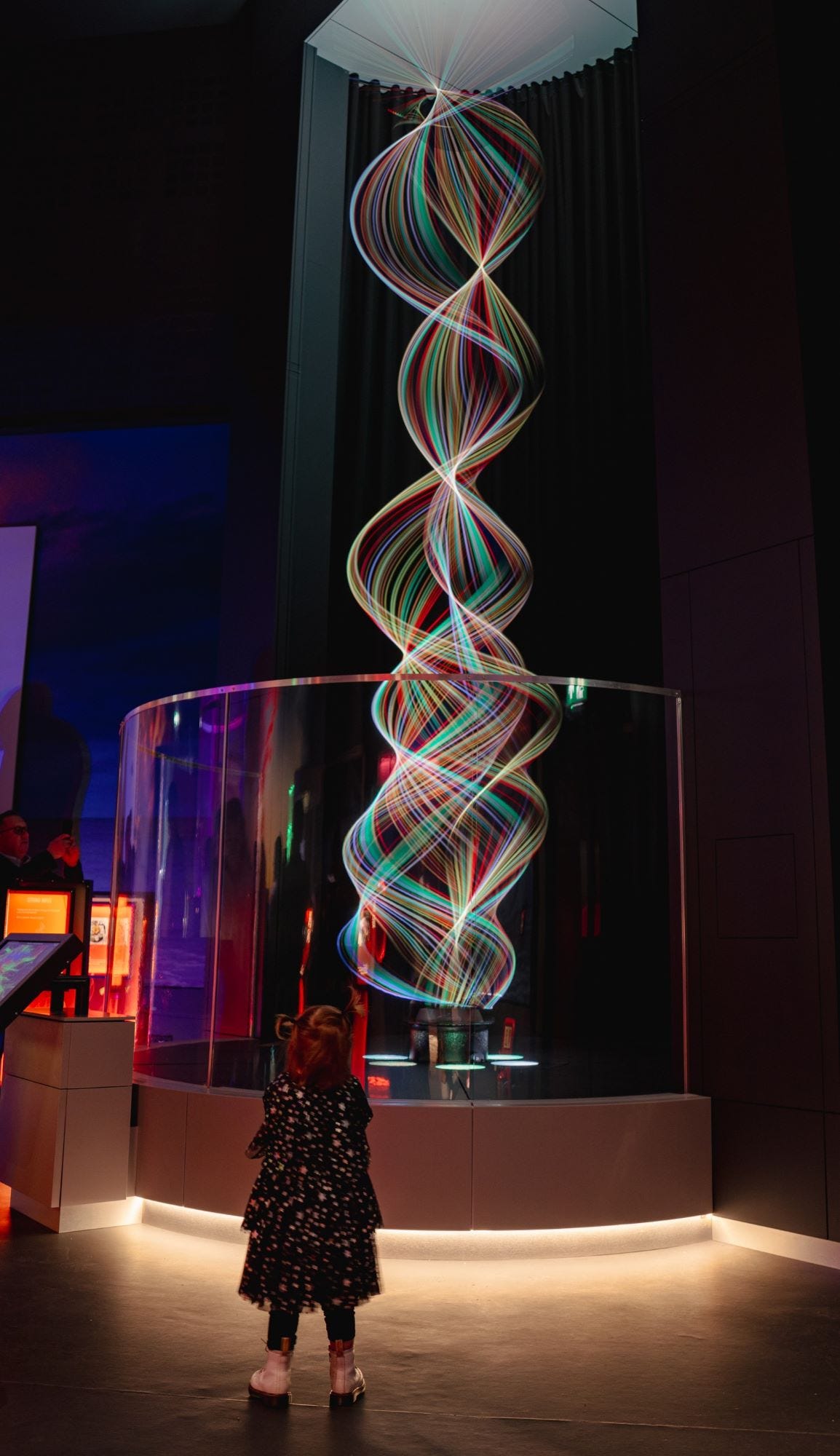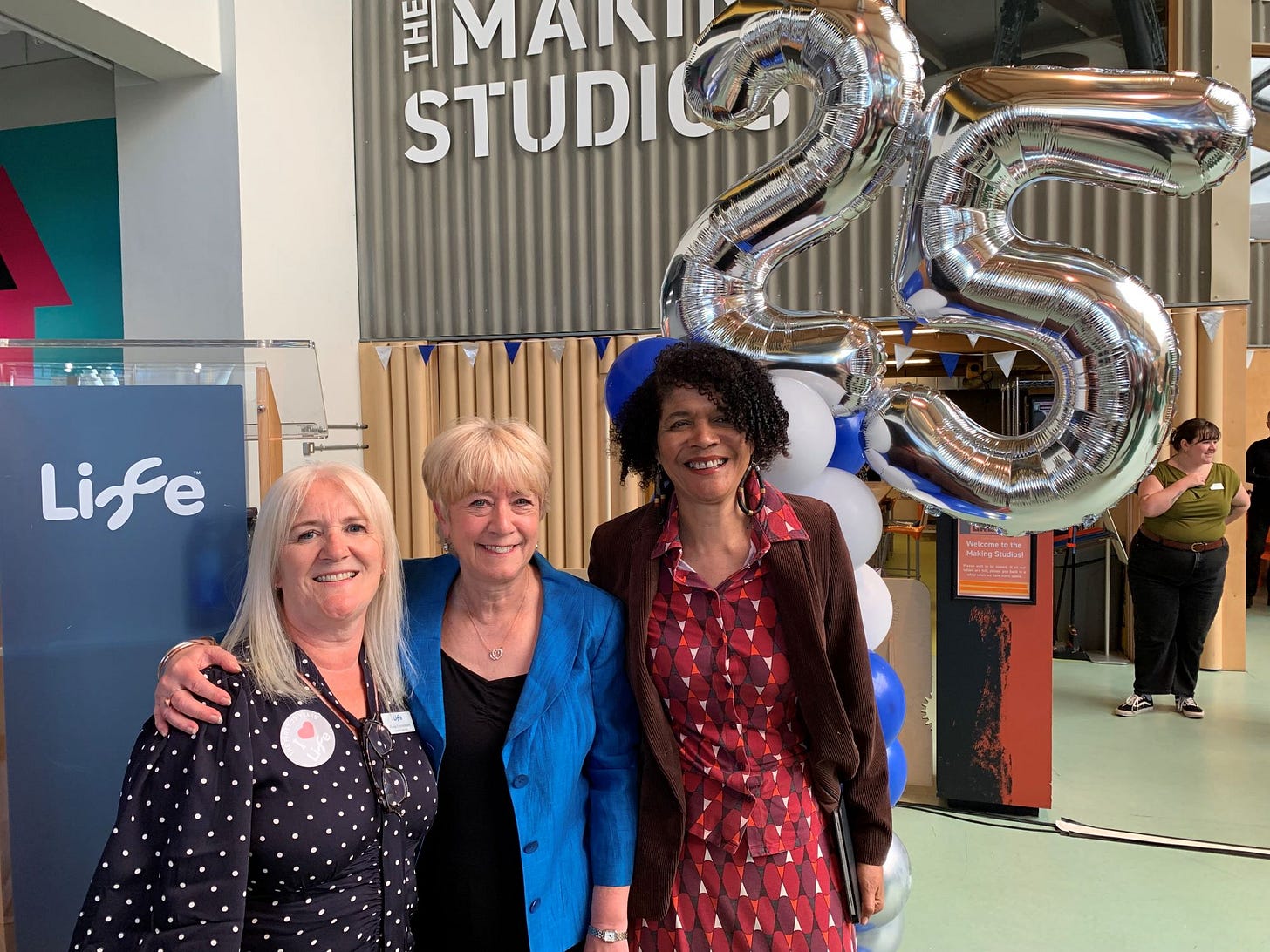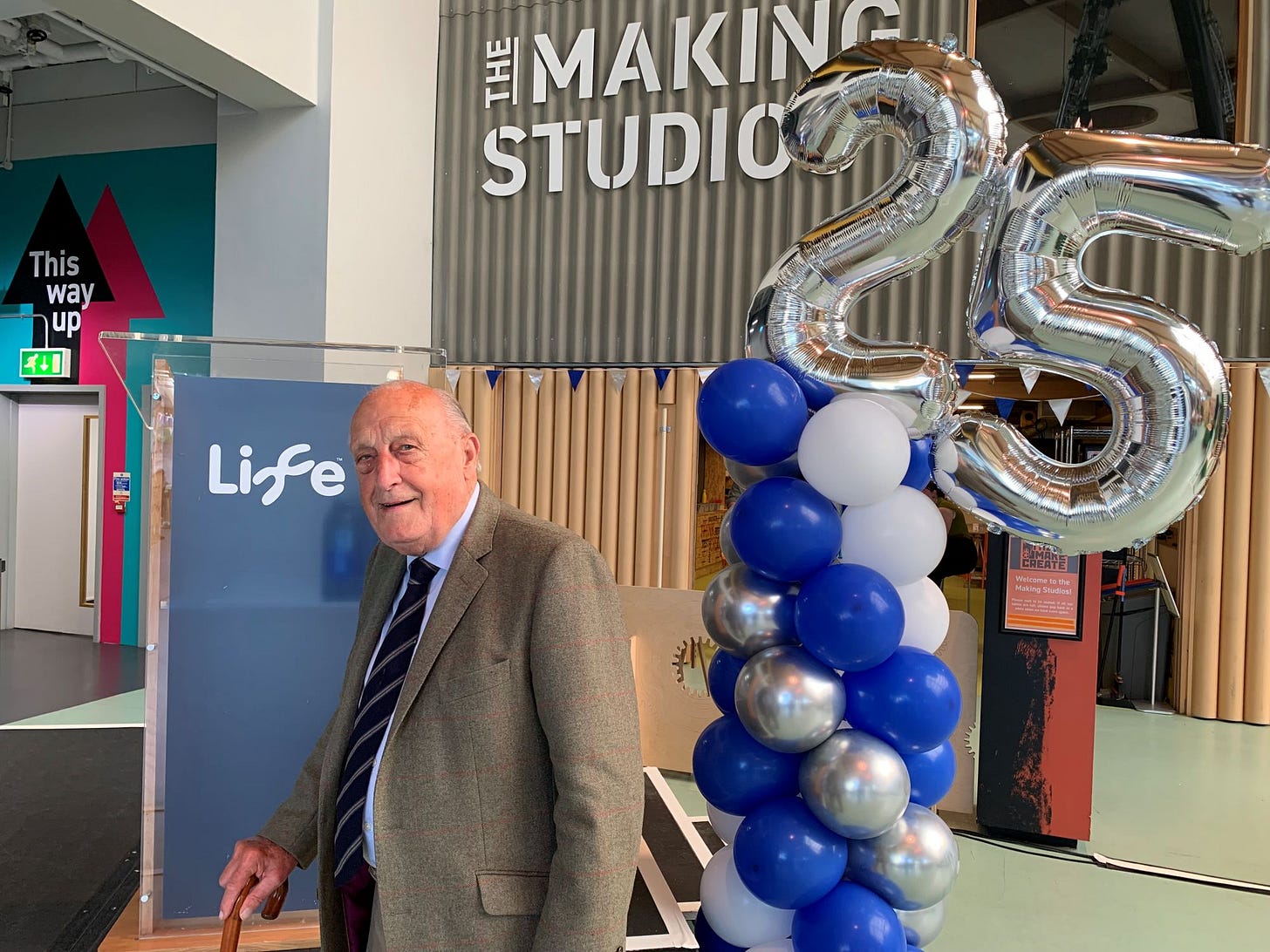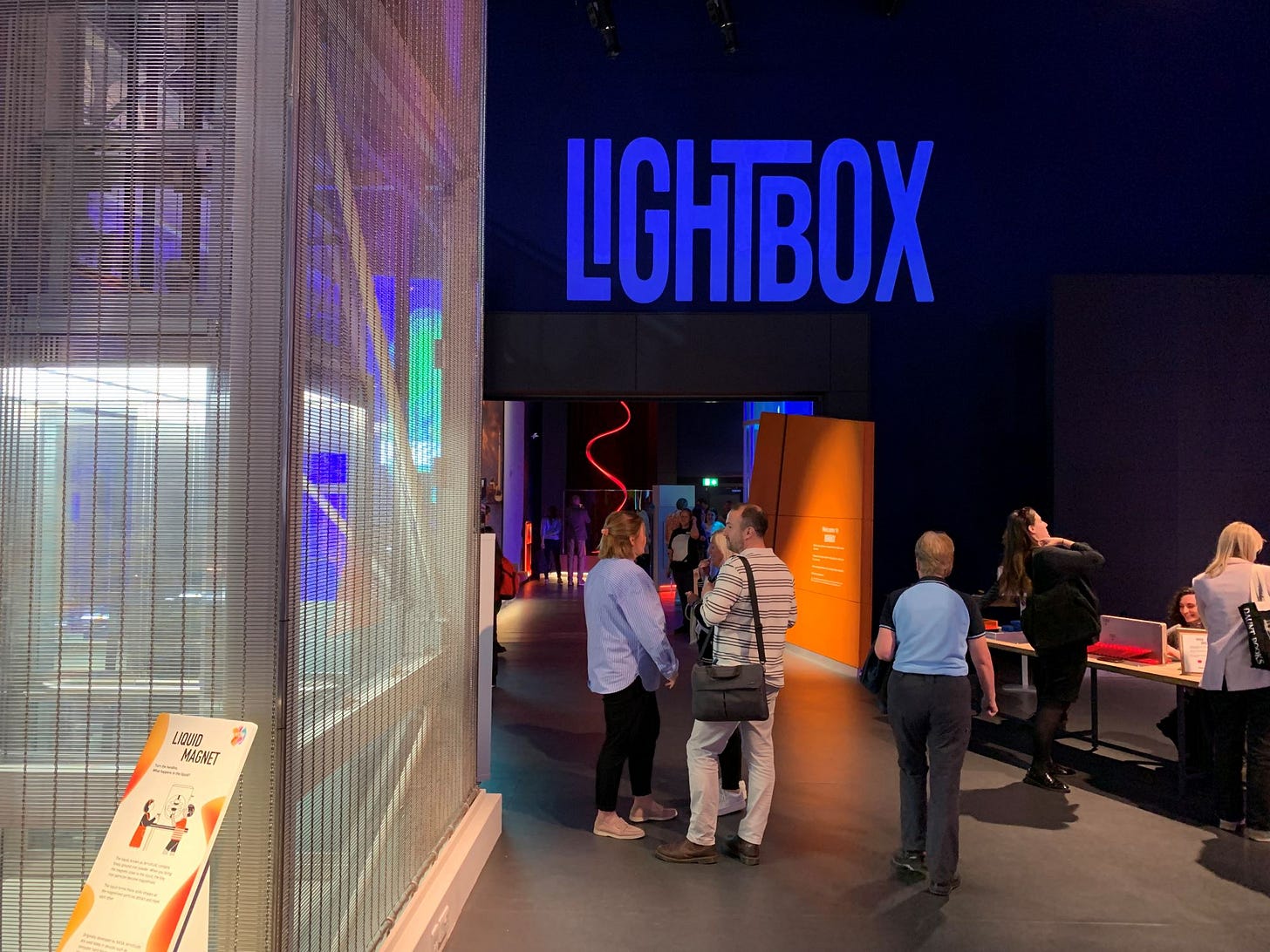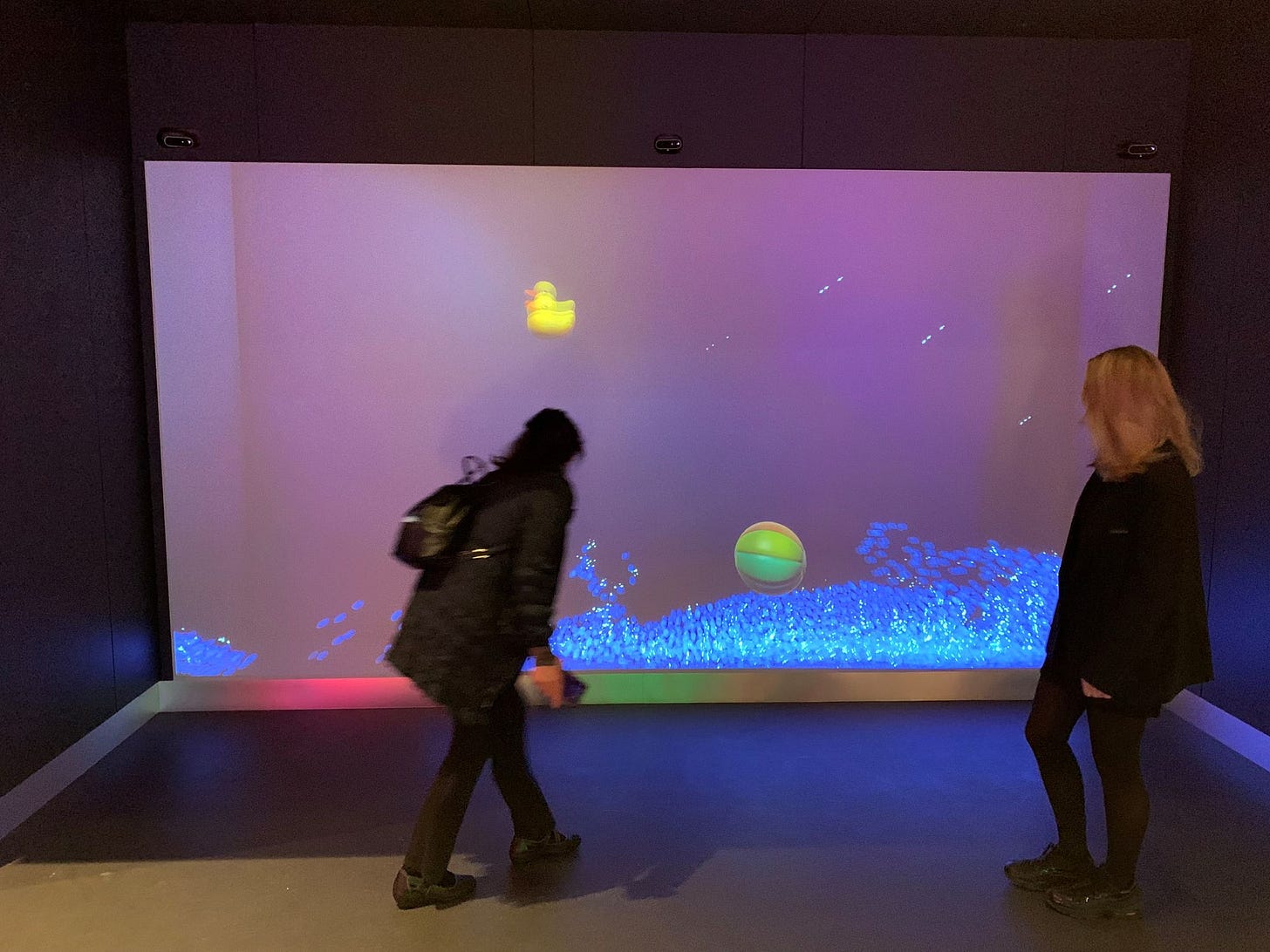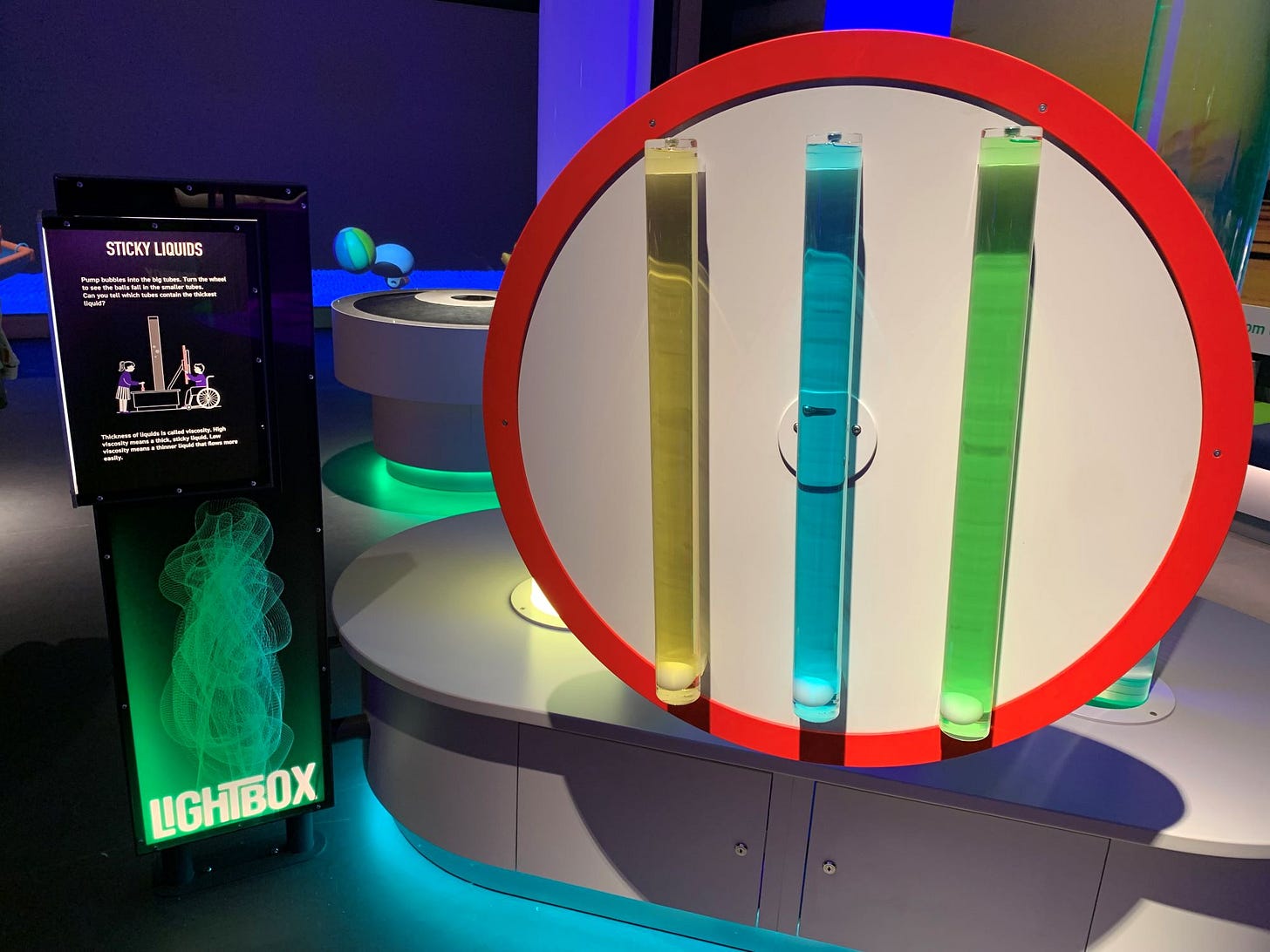Life celebrates 25 years with a major new attraction
A huge asset to city and region, says Newcastle MP
Life goes on… and will do so with the help of a whizzy new Lightbox attraction which was unveiled at a party to mark 25 years of the science centre next to Newcastle Central Station.
With admission prices reduced by 25% over half term (which is to say until June 1) now is a good time to get involved in its entertaining manipulation of light, colour and sound.
Many will have fond memories of the 4D Motion Ride which was a thrilling feature of the place for many years. But that, according to the management, came to the end of its life in 2019 – and in any case it’s important to stay fresh and move with the times.
What you get with Lightbox is a sort of interactive science playground with 14 hands-on exhibits by artists and other leading exponents of this kind of thing.
Physicist turned kinetic artist Paul Friedlander contributed String Wave, an 8m high sculpture inspired, we’re told, by his invention (does one invent these things or discover them?) of the technique of chromastrobic light – the sort that changes colour faster than the human eye can see.
Hmmm! How, in that case, can you tell?
That’s another of the many questions that will no doubt arise in far more inquiring and fertile minds than mine.
There’s also a multi-user projection developed by Preloaded, a Bafta-winning immersive games studio, where visitors can play with simulated water, waves and ducks.
And from exhibition designers Hüttinger, based in Germany, comes a 10m high tornado tower, the largest in Europe.
You’re invited to step inside and it’s almost certainly more fun than being immersed in the real thing.
We also tried the catwalk affair that challenges visitors to creep along a short corridor as lightly as possible. My blundering efforts resulted in a big fail every time – so no late-flowering career as a burglar or big game tracker for me.
Investing £1.5m in Lightbox is a heartening statement of confidence in the future of this prominent attraction at the heart of Newcastle.
When the science centre idea was first mooted as a millennium project at the end of the last century (a phrase guaranteed to make anyone feel old), there was a degree of scepticism.
There was a reminder of this at the party which was attended by Alistair Balls, first chief executive of the International Centre for Life and a past chairman, and Sir John Hall.
Chief executive Linda Conlan, a dedicated Lifer who took over the role from Alistair and has been involved from the start, paid tribute to her one-time colleague at the old Tyne & Wear Development Corporation.
“He’s the man who, more than anyone, had the drive, the determination and the sheer bloody-mindedness to make this happen,” she said.
Sir John was there, too, hale and hearty for a man of 92 and looking forward to Newcastle United’s last match of the season at St James’ Park.
“I’ll be there,” he said, predicting (for the record) a 3-1 home win.
“I was on the Millennium Commission,” explained Sir John who made headlines in the 1980s with his audacious Metrocentre development but also played a crucial role in establishing the science centre.
“The Government appointed me. There was money to spend and we needed new schemes in the region at the time so I pushed it like hell. It’s just gone way beyond what I ever thought it would.”
As Linda Conolon recalled: “Sir John was instrumental in getting the money to make this place happen.
“I remember him coming in and saying, ‘You’ve got to think big – don’t call it the Centre for Life, call it the International Centre for Life’. He was so right.”
The name thing can be confusing. Life is what you see colourfully emblazoned across the entrance to the 10-acre site now named Times Square.
It used to be a cattle market which explains the incongruous old building in the middle. Designed by architect John Dobson, it was the auctioneer’s headquarters.
The site became a bus station and then for a number of years afterwards was a makeshift carpark, handy for the city centre but perhaps not wholly secure.
Then in the mid-1990s a team including Alastair Balls and Linda Conlon, geneticist Sir John Burn and science writer Matt Ridley started to lay plans for a centre focusing on the emerging field of genetic science.
Life is the shorthand name for the International Centre for Life which includes NHS clinics and Newcastle University research labs along with the visitor attraction properly known as the Life Science Centre.
Designed by architect Sir Terry Farrell, it opened on May 27, 2000, one of 14 landmark millennium projects around the country. It cost £60m and was officially opened by Queen Elizabeth II.
Not all the projects opened with comparable fanfare lasted long into the new millennium. There’s always an element of risk.
But 25 years on, it’s possible to look back at Life’s history and chalk up the achievements of the medics and scientists who have worked on site – and to draw satisfaction from the visitor figures.
To mark the quarter-century Linda read out some of the stories of those who had responded to an anniversary call-out.
There was the woman in Australia whose innovative science programme for indigenous people had resulted in some of them embarking on careers with NASA. Her interest in science had been sparked at Life.
Then there was Ella-Joy Hunton, an IVF baby conceived at Life and born in 2000. Having completed a master’s degree in midwifery, she is now helping to deliver other babies, including some conceived using IVF.
Entrepreneur Fiona Cruickshank, who joined the board 12 years ago and took over as chair in 2020, confessed to a low boredom threshold but said there was always something new and challenging at Life.
“It’s a very special organisation,” she said.
“It never stands still and it does have a big impact in the region. The energy, passion and drive of the team always impresses me.
“The site is a home to Newcastle University and two NHS clinics. We’ve got life-enhancing research and treatment taking place here every day.
“Six thousand babies have been born as a result of the NHS Fertility Clinic on site and 560,000 people have access to services and facilities on this site every year.
“And the Life Science Centre we’re standing in has welcomed thousands of families and schoolchildren over the years.
“A lot has changed since it opened but the ethos, to make science accessible, relevant and fun, remains the same.”
Chi Onwurah, MP for Newcastle Central and West and chair of the science, innovation and technology select committee, called Life “one of the world’s greatest centres for science outreach” and “a huge asset for the city and region”.
Before declaring Lightbox open, she recalled seeing the groundbreaking vessel Turbinia on display in Newcastle and being inspired to go on and study electrical engineering.
It was vital, she said, to drive the curiosity of the next generation.
“All children start off as scientists, engineers and artists and it’s up to all of us to ensure they have the opportunity to realise that potential – and we all need to be constantly expanding our skills.”
And so Life strides confidently into its next quarter-century.



